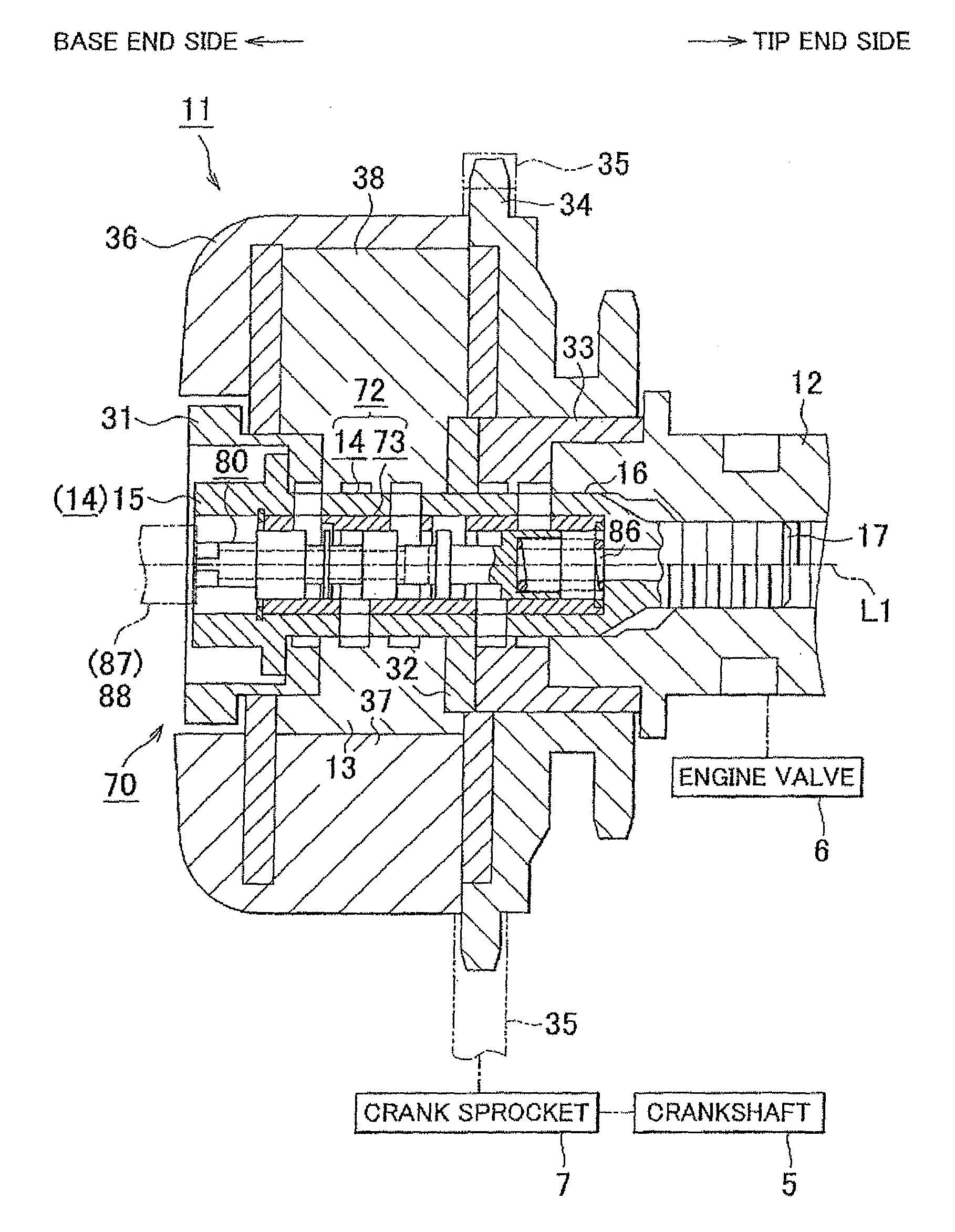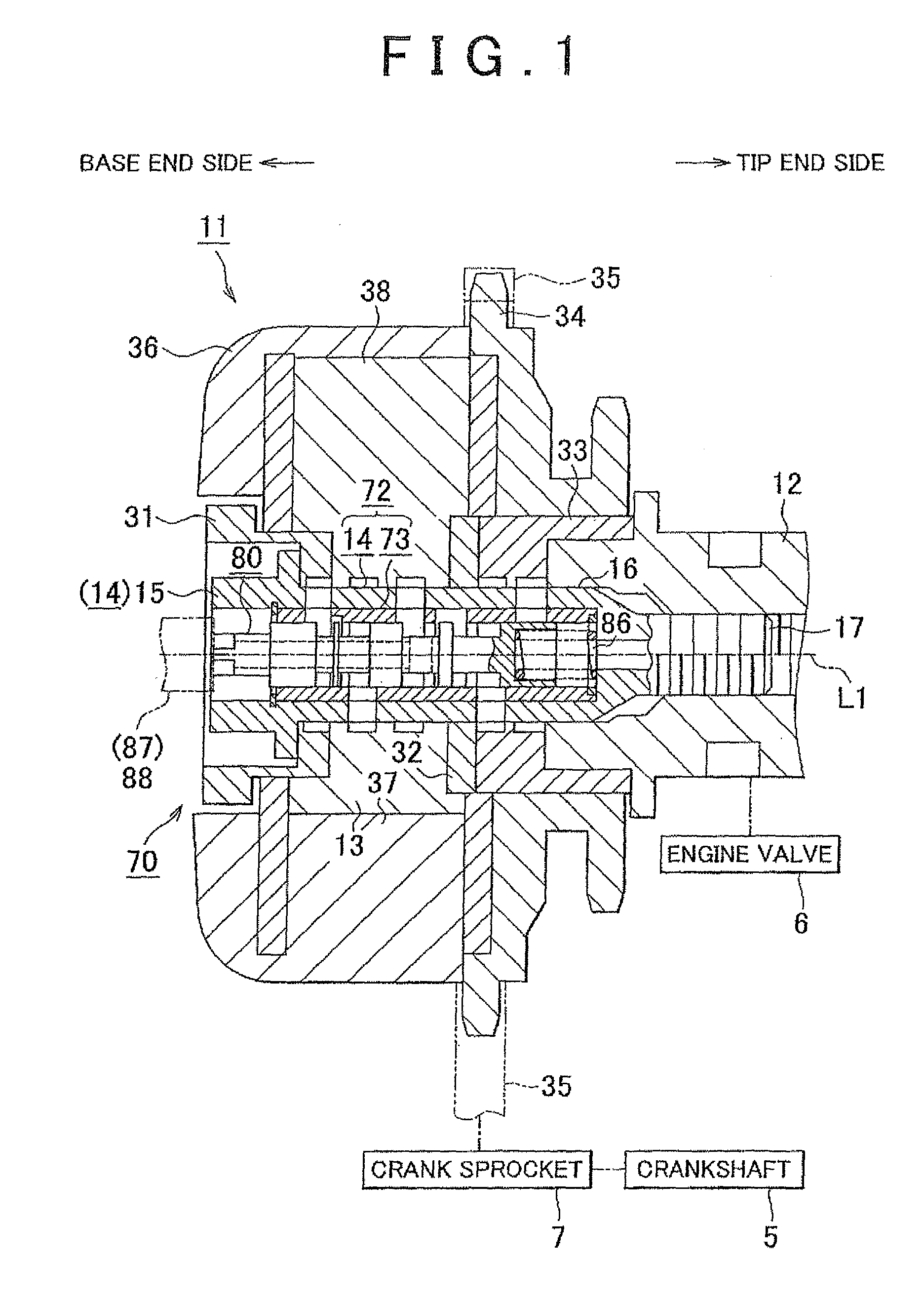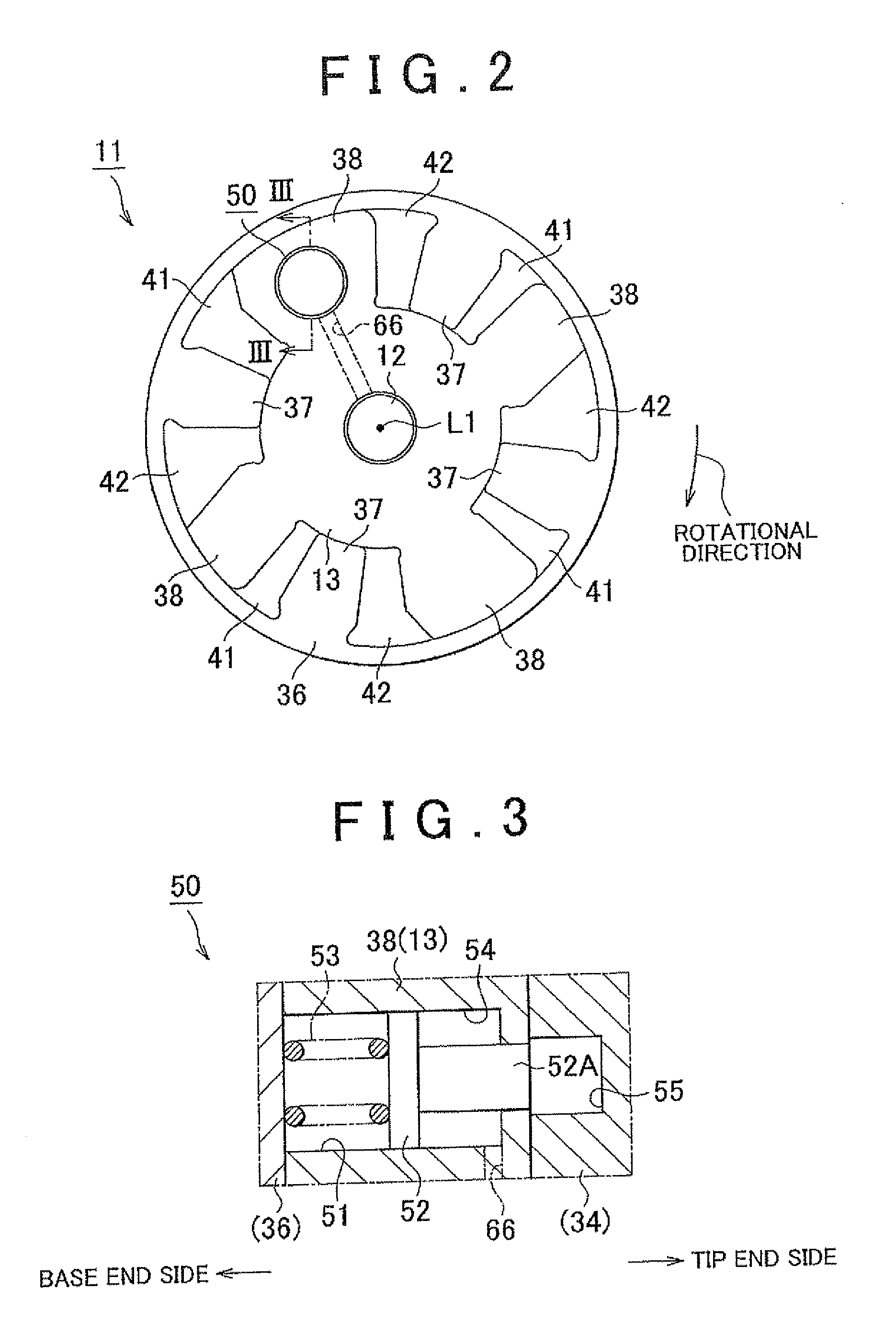Flow rate control valve
a flow rate control and valve body technology, applied in the direction of mechanical equipment, machines/engines, transportation and packaging, etc., can solve the problems of affecting the flow rate of hydraulic fluid supply/discharge, and affecting the flow rate of hydraulic fluid supply
- Summary
- Abstract
- Description
- Claims
- Application Information
AI Technical Summary
Benefits of technology
Problems solved by technology
Method used
Image
Examples
first embodiment
[0047]the invention will be described hereinafter with reference to FIGS. 1 to 11. As shown in FIG. 1, an internal combustion engine includes a crankshaft 5, which serves as an output shaft thereof, and a camshaft 12 that actuates the engine valves 6 such as intake valves and exhaust valves in an opening / closing manner. The crankshaft 5 and the camshaft 12 are rotatably supported in the direction indicated by the arrow of FIG. 2.
[0048]As shown in at least one of FIGS. 1 and 2, the internal combustion engine is equipped with a variable valve timing mechanism 11. The variable valve timing mechanism 11 changes the rotational phase of the camshaft 12 relative to the crankshaft 5 to vary the valve timing, that is, one of valve opening / closing characteristics of the engine valves 6. The expression to vary the valve timing means that the valve timing may be advanced or retarded while maintaining the duration (i.e., the valve open period) of the engine valves 6 constant.
[0049]The left side ...
second embodiment
[0107]Consequently, according to the invention, the following effects are obtained as well as the aforementioned effects (1) to (6). (7) A sleeve formed of a material having a higher coefficient of thermal expansion than the bolt 14 is employed as the sleeve 73. Thus, in the normal operating temperature range of the flow rate control valve 70 in which the temperature of the hydraulic fluid is high, the gap between the sleeve 73 and the bolt 14 is kept as narrow as possible to restrain the hydraulic fluid from leaking out and suppress the deterioration in the flow rate characteristic of the flow rate control valve 70.
[0108]Next, a third embodiment of the invention as still another concrete form thereof will be described. In the third embodiment of the invention, the material used to form the sleeve 73 has a coefficient of thermal expansion equal to or close to that of the bolt 14, but is otherwise configured identically to the first embodiment. In the embodiment, the sleeve 73 is for...
third embodiment
[0110]Further, the sleeve 73 press-fitted in the insertion portion 18 is unlikely to move in either the axial or circumferential directions. Thus, according to the invention, the following effects are obtained as well as the foregoing effects (1) to (6).
[0111]The sleeve 73 formed of the same material as the bolt 14 is press-fitted into the insertion portion 18 after the movable member 13 is fastened by the bolt 14. Thus, even if the bolt 14 is distorted by the fastening torque in fastening the movable member 13, the foregoing effect (1) of suppressing the change in the flow rate characteristic resulting from the gap between the sleeve 73 and the spool 80 and the operational failure in the spool 80 can be obtained.
[0112]Further, movement of the sleeve 73 in the direction along the axis L1 during the operation or the like of the flow rate control valve 70, which causes the positional relationships between the ports 22 to 26 and the through holes 74 to deviate or causes the positional ...
PUM
 Login to View More
Login to View More Abstract
Description
Claims
Application Information
 Login to View More
Login to View More - R&D
- Intellectual Property
- Life Sciences
- Materials
- Tech Scout
- Unparalleled Data Quality
- Higher Quality Content
- 60% Fewer Hallucinations
Browse by: Latest US Patents, China's latest patents, Technical Efficacy Thesaurus, Application Domain, Technology Topic, Popular Technical Reports.
© 2025 PatSnap. All rights reserved.Legal|Privacy policy|Modern Slavery Act Transparency Statement|Sitemap|About US| Contact US: help@patsnap.com



